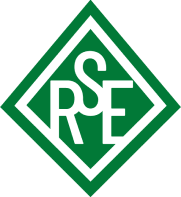
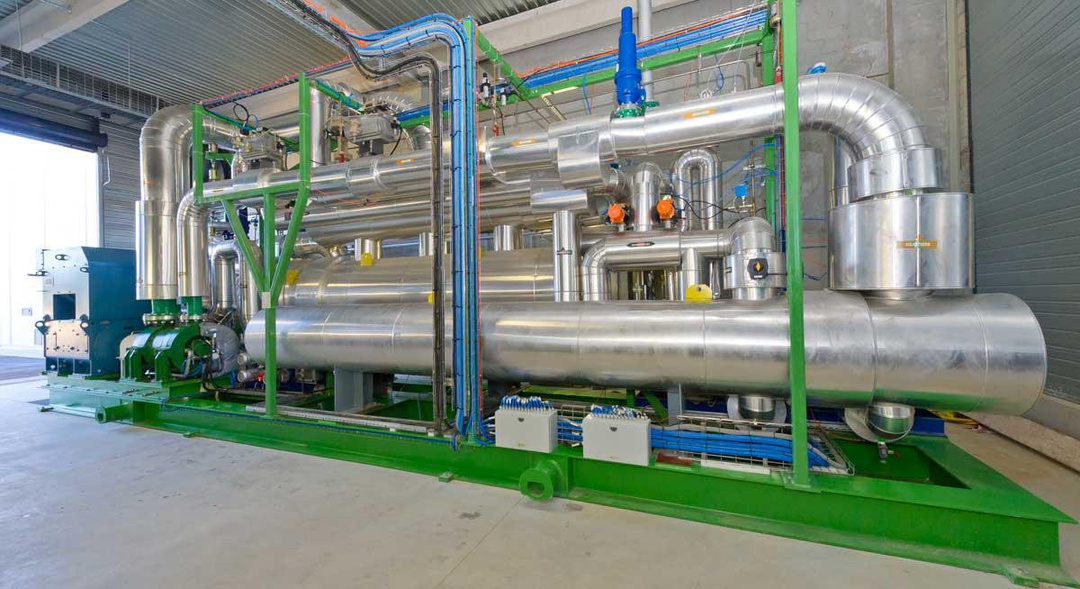
ORC system
The ORC unit is a system based on a closed thermodynamic cycle for the production of electricity and heat, particularly suitable for distributed generation. ORC systems can produce electricity and heat using multiple sources, such as renewable energy sources (biomass, geothermal energy, solar energy), conventional fuels and waste heat from industrial processes, waste incinerators, engines or gas turbines.
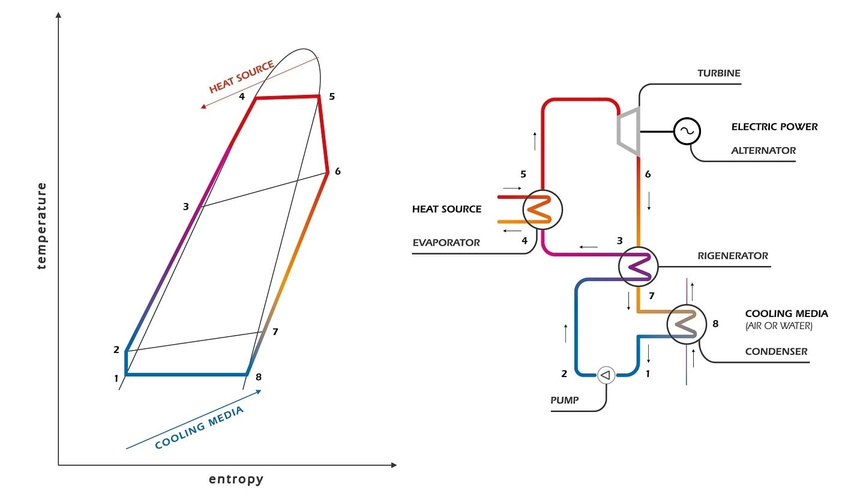
The principle of the Rankine organic cycle
The principle of the organic Rankine cycle is based on a turbogenerator that works like a conventional steam turbine to convert thermal energy into mechanical energy and finally into electrical energy through an electric generator. Instead of generating steam from water, the ORC system vaporizes an organic liquid with a molecular weight higher than that of water, resulting in slower turbine rotation, lower pressure and no erosion of metal parts and blades.
ORC turbogenerator
The ORC turbogenerator uses medium to high-temperature thermal oil to preheat and vaporize the appropriate organic working fluid in the evaporator (4>5). The vapors of the organic liquid turn a turbine (5>6) which is directly connected to an electric generator, providing clean, reliable electricity. The exhaust steam passes through the regenerator (6>7), where it heats the organic liquid (2>3), and then condenses in the condenser and is cooled by the cooling circuit (7>8>1). Then, the organic working fluid is pumped (1>2) into the regenerator and evaporator, thus completing the operation of the closed cycle.
-
Boilers product line
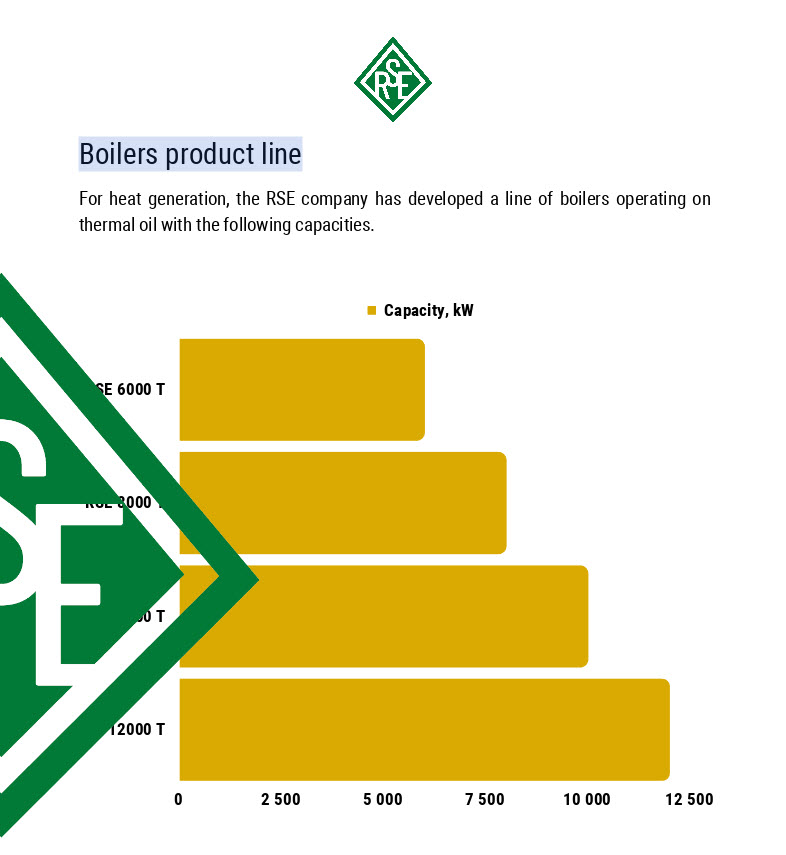
Boilers product line
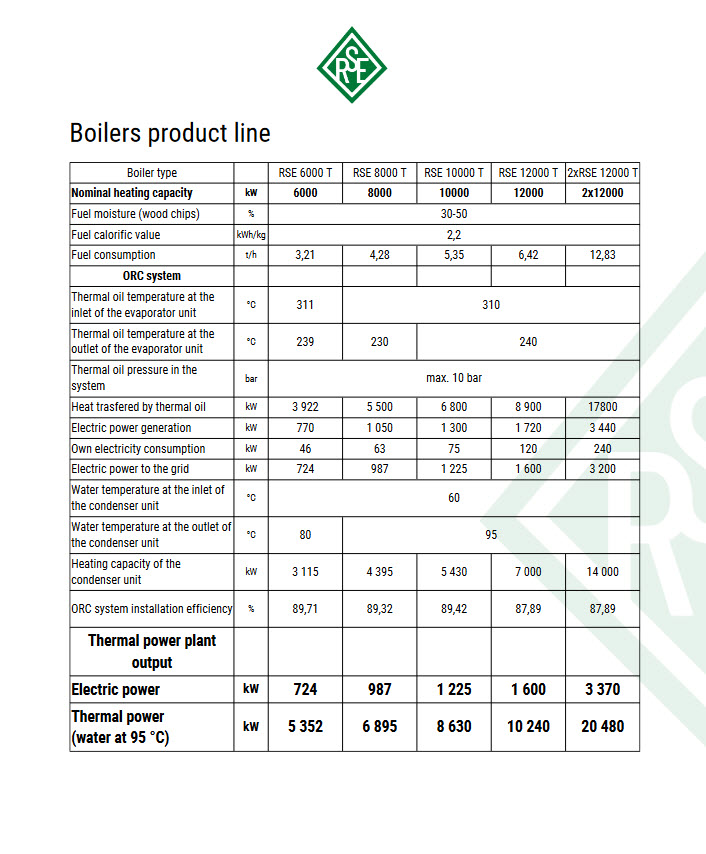
-
Example of the implementation of a heat generating
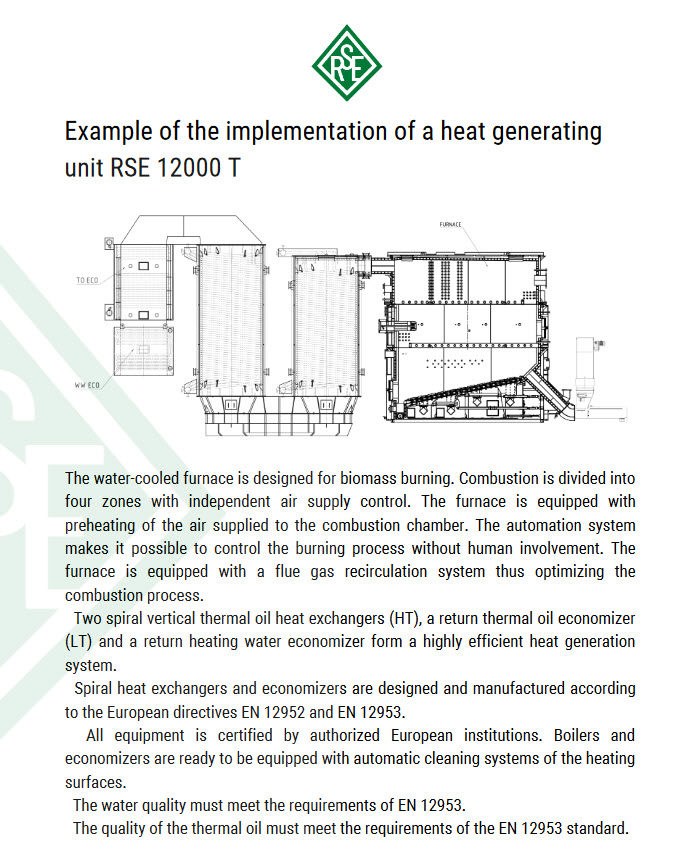
Example of the implementation of a heat generating
-
Description of the ORC system
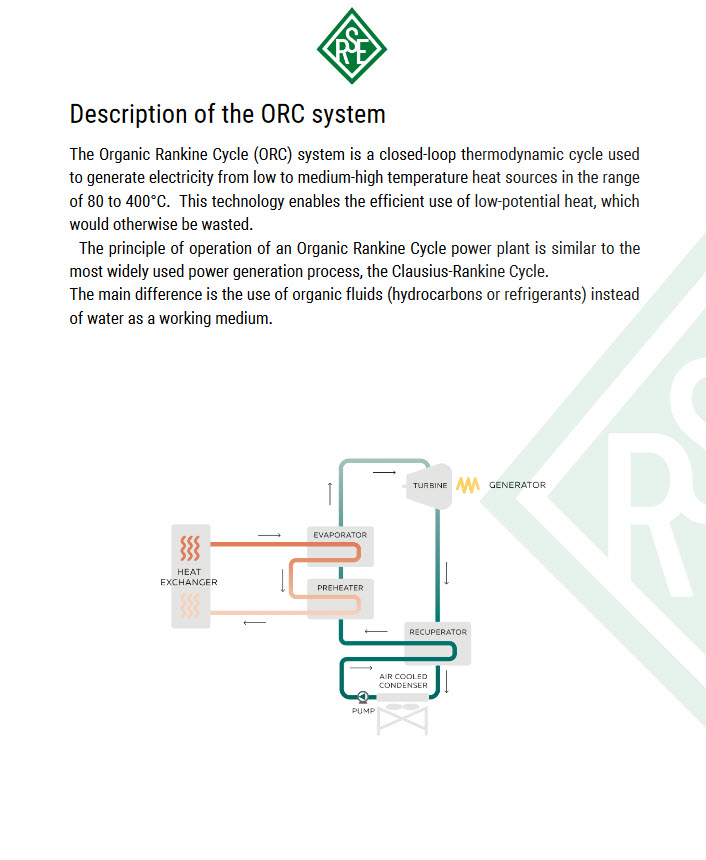
Description of the ORC system
-
Advantages of thermal power plants with ORC system in comparison with a steam turbine
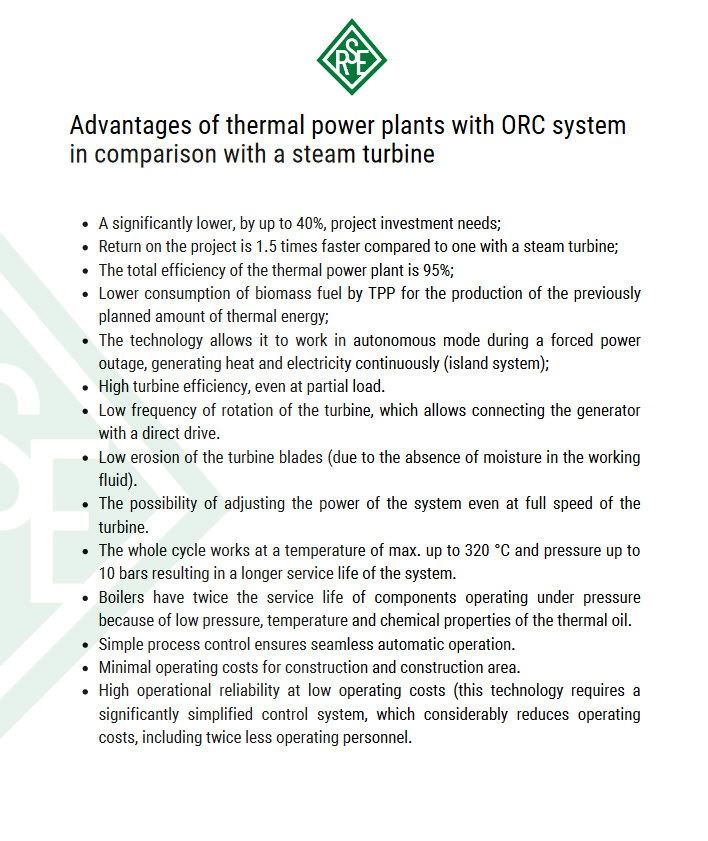
Advantages of thermal power plants with ORC system in comparison with a steam turbine
-
ORC turbogenerator
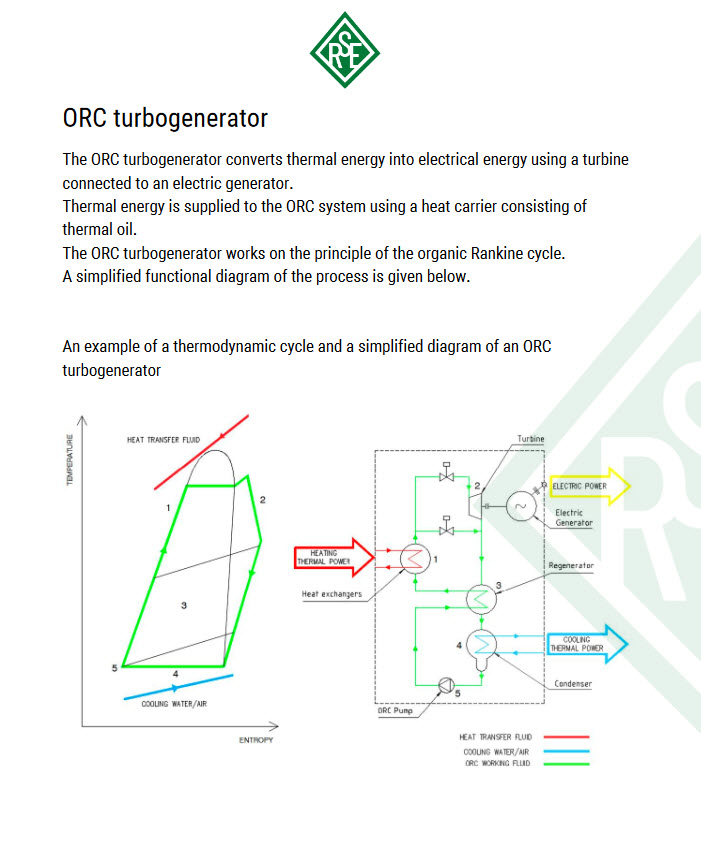
ORC turbogenerator
-
Heat balance of a heat and power generating unit RSE 12000 T
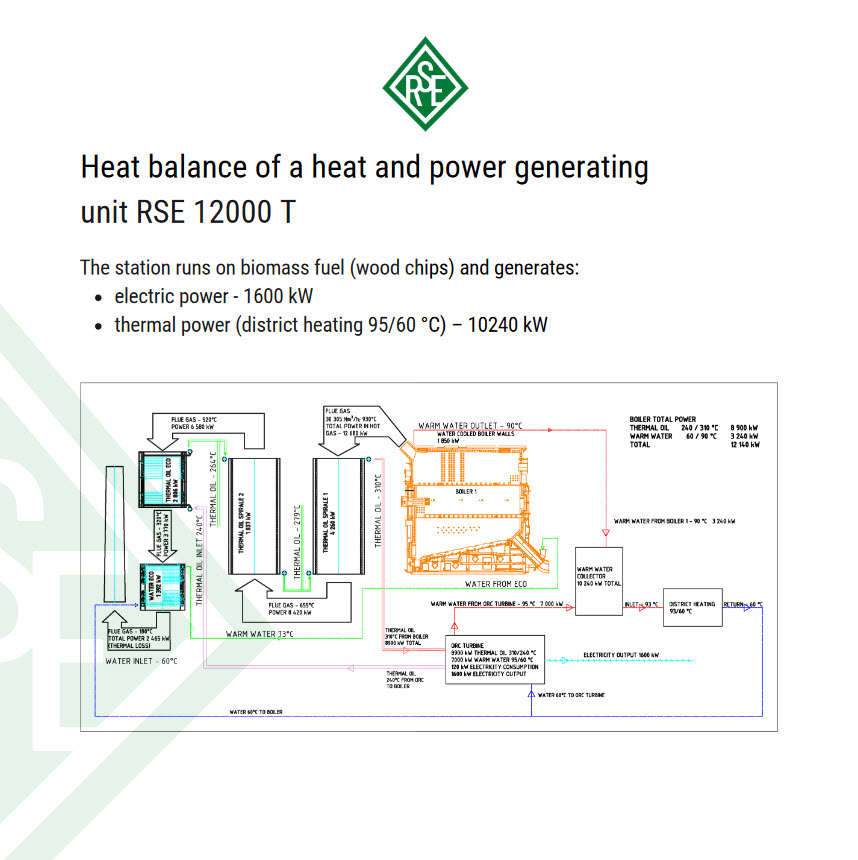
Heat balance of a heat and power generating unit RSE 12000 T
-
Heat balance of a heat and power generating unit 2xRSE 12000 T
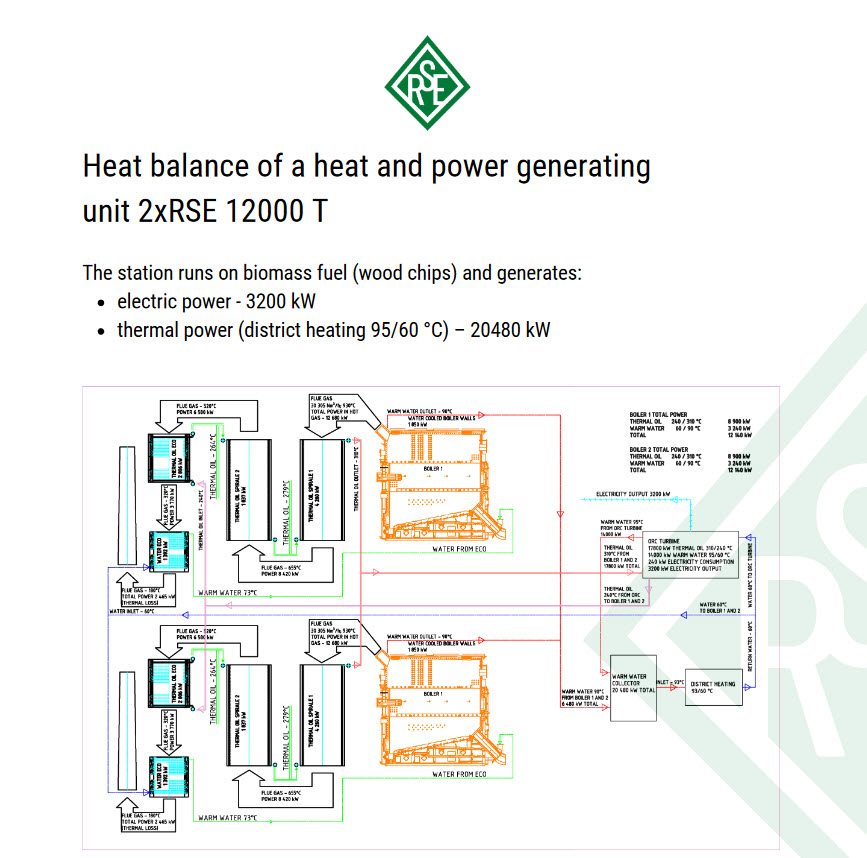
Heat balance of a heat and power generating unit 2xRSE 12000 T
-
Heat balance of the plant with RSE 12000 T heat and power generating unit and RSE 10000 boile
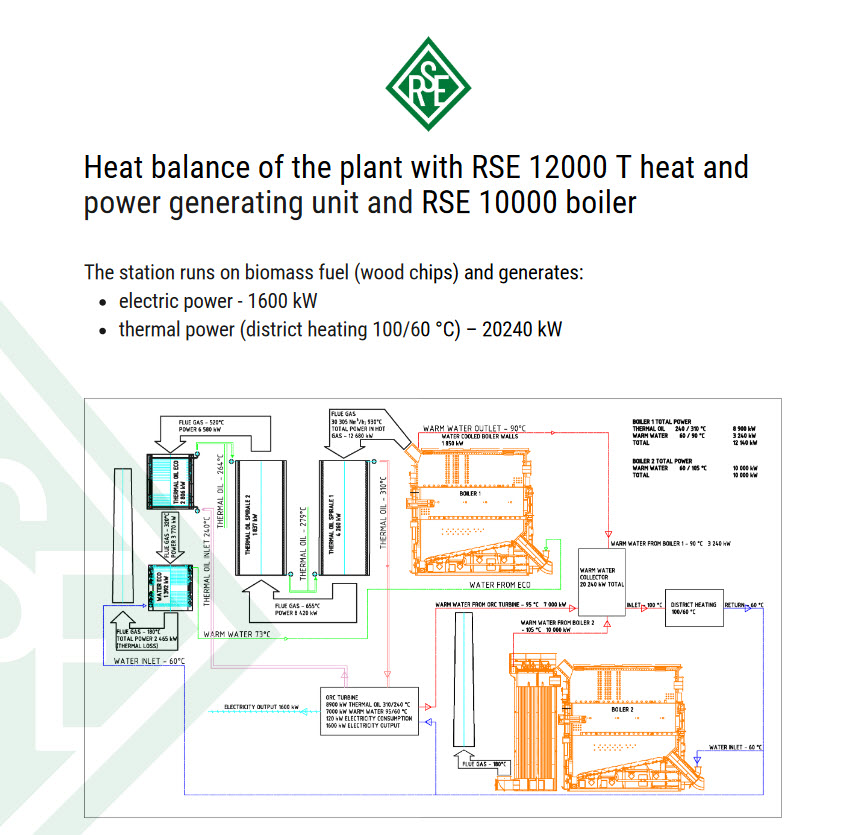
Heat balance of the plant with RSE 12000 T heat and power generating unit and RSE 10000 boile
Станція працює на біопаливі (тріска) та генерує:
- електроенергія – 1600 кВт
- теплова енергія (100/60 °C) – 20240 кВт
